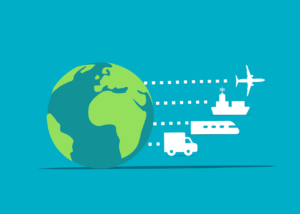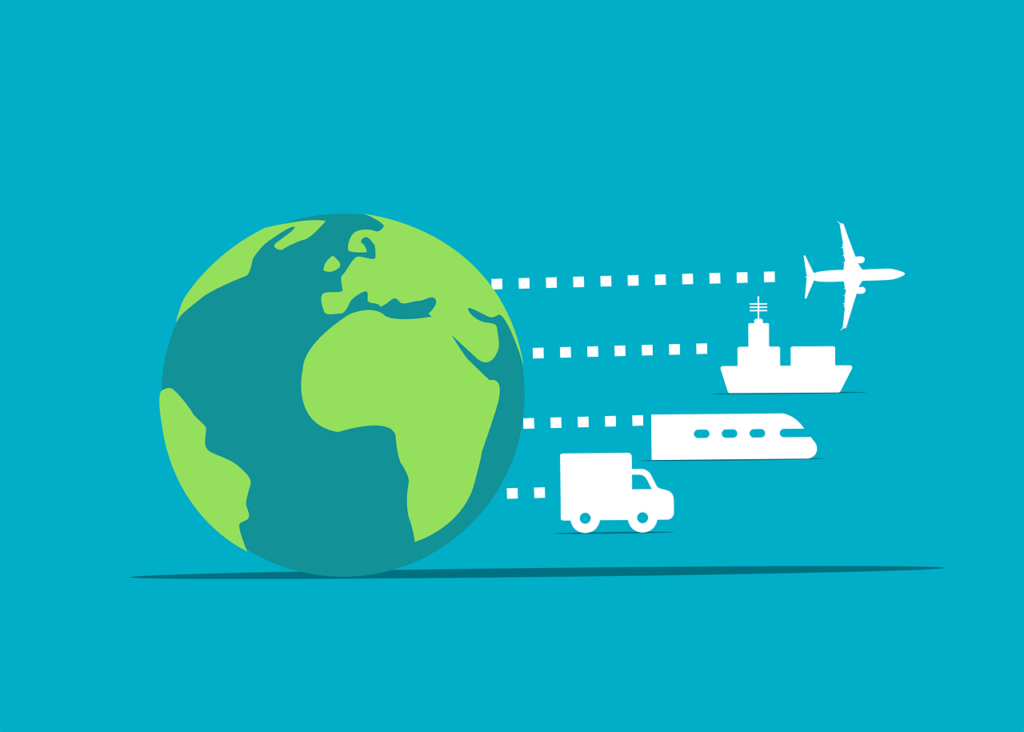Whether you’re an online store owner, relocating abroad, or simply need to send an urgent package overseas – international air shipping is the fastest and most efficient solution.

International Air Shipping: Everything You Need to Know
Introduction
In today’s globalized world, international air shipping has become an essential component of the supply chain for businesses and individuals alike.
Whether you’re an e-commerce retailer looking to expand your customer base, a manufacturer sourcing materials from overseas, or an individual relocating to another country, understanding the ins and outs of international air freight shipping is crucial.
In this comprehensive guide, we’ll cover everything you need to know about international air shipping, from its basics to the key factors influencing pricing, transit times, and customs clearance. We’ll also explore some of the leading international air freight shipping companies and alternative modes of transport like international sea and air shipping.
How International Air Shipping Works?
At its core, international air shipping involves transporting goods by aircraft from one country to another. This can include everything from small parcels and packages to oversized pallets and containers.
The process typically begins with the shipper preparing the goods for transport, which may involve packaging, labeling, and completing necessary documentation like commercial invoices and air waybills. The goods are then transported to the airport of origin, where they are processed by the carrier or freight forwarder and loaded onto the aircraft.
Depending on the route and the carrier, the goods may be flown directly to their destination or transit through one or more intermediate airports. Upon arrival at the destination airport, the goods are unloaded, cleared through customs, and either picked up by the recipient or delivered to their final destination.
Advantages of International Air Shipping
There are several key advantages to choosing air freight over other modes of international transport:
- Speed: Air freight is the fastest shipping method internationally, with transit times typically ranging from 1 to 7 days, depending on origin and destination.
- Reliability: Airlines operate on strict schedules and have high standards for cargo handling, which means that air freight is generally more reliable than other modes of transport.
- Security: Airports and airlines have robust security protocols, which reduce the risk of theft, damage, or loss of goods in transit.
- Flexibility: Air freight can accommodate a wide range of goods, from small parcels to oversized or perishable items, and can be used for scheduled and charter services.
Of course, these advantages come at a cost – air freight is generally more expensive than ocean or ground transport. However, for time-sensitive or high-value shipments, the speed and reliability of air freight can more than justify the added expense.
Factors Affecting Air Freight Rates
The cost of shipping goods by air can vary widely depending on a range of factors, including:
- Weight and Size: Air freight rates are typically based on either the actual weight of the goods or their volumetric weight (i.e., the amount of space they take up), whichever is greater.
- Distance: The farther the goods need to travel, the higher the shipping cost. However, rates may increase slowly with distance, as carriers often have hub-and-spoke networks that can offer discounted rates for specific routes.
- Fuel Prices: The cost of aviation fuel is a significant component of air freight rates, and fluctuations in fuel prices can significantly impact shipping costs.
- Season: Air freight rates can vary depending on the time of year, with peak seasons like the lead-up to holidays often seeing higher rates due to increased demand.
- Product Type: Certain types of goods, such as hazardous materials, live animals, or perishables, may incur additional handling fees or require specialized equipment, which can increase the overall cost of shipping.
To get a sense of the range of air freight rates, here’s a table with some examples for shipping a 100kg pallet from New York to London:
| Service Level | Transit Time | Price (USD) |
| Express | 1-2 days | $7,00-1,500 |
| Standard | 3-5 days | $400-800 |
| Deferred | 5-7 days | $300-600 |
Prices are only estimates and subject to change based on the abovementioned factors.
As you can see, express services come at a premium, while deferred services offer lower rates but longer transit times. Working with a reputable freight forwarder or carrier is essential to get accurate quotes based on your needs.
Customs Clearance and Documentation
One of the most complex aspects of international air shipping is navigating the customs clearance process. Each country has regulations and requirements for imported goods, including tariffs, duties, taxes, and restrictions on certain products.
To facilitate customs clearance, shippers must provide accurate and complete documentation for their goods, including:
- Commercial Invoice: A detailed description of the shipped goods, including their value, quantity, and country of origin.
- Packing List: A list of all the items included in the shipment and how they are packaged.
- Air Waybill: A contract between the shipper and the carrier that serves as a receipt for the goods and a document with shipping instructions.
- Certificate of Origin: A document that certifies the country where the goods were manufactured or produced.
- Other Certificates: Depending on the nature of the goods, additional certificates may be required, such as a phytosanitary certificate for plant products or a dangerous goods declaration for hazardous materials.
Failing to provide the necessary documentation or accurately declare a shipment’s contents can result in delays, additional fees, or even customs authorities’ seizure of the goods. That’s why working with experienced professionals who can help ensure compliance with all relevant regulations is so important.
Tracking and Insurance
Another important consideration when shipping goods internationally is tracking and insurance. Most major carriers and freight forwarders offer online tracking tools that allow shippers to monitor the progress of their shipments from origin to destination, with updates on critical milestones like departure, arrival, and customs clearance.
In addition, shippers may want to purchase cargo insurance to protect against the risk of loss, damage, or delay.
While carriers have limited liability for goods in their care, the compensation they offer may not cover the total value of the goods. Cargo insurance can provide additional peace of mind and financial protection, especially for high-value or sensitive shipments.
When purchasing cargo insurance, it’s essential to carefully review the terms and conditions of the policy, including the types of risks covered, the exclusions and limitations, and the claims process. Some common types of coverage include:
- All-risk Coverage provides broad protection against physical loss or damage from external causes, with some exclusions, such as wear and tear or inherent vice.
- Named Perils Coverage: Covers only specific risks listed in the policy, such as fire, theft, or natural disasters.
- General Average Coverage: Covers the shipper’s proportional share of losses or expenses incurred to save the ship and its cargo in an emergency.
Leading International Air Freight Shipping Companies
When choosing a carrier or freight forwarder for your international air shipments, there are many options to consider. Here are some of the leading players in the industry:
- FedEx: One of the world’s largest express transportation companies, FedEx offers international air shipping services for documents, packages, and freight, with a network spanning over 220 countries and territories.
- UPS: Another global leader in logistics, UPS provides air freight international shipping services for packages and freight, with a focus on supply chain solutions and e-commerce fulfillment.
- DHL: A Deutsche Post DHL Group division, DHL offers express and freight services for international air shipping and has a strong presence in Europe and Asia.
- DB Schenker: A global logistics provider focusing on air cargo international shipping, DB Schenker offers a range of air freight services, including charter and specialized solutions for industries like aerospace and healthcare.
- Kuehne + Nagel: One of the world’s leading freight forwarders, Kuehne + Nagel provides international air freight shipping services for various industries, focusing on sustainability and digitalization.
When evaluating potential partners for your international air shipments, consider factors like network coverage, service offerings, pricing, and customer support. Reading international sea and air shipping reviews can provide valuable insights into other shippers’ experiences.
Alternative Modes of International Shipping
While air freight is often the fastest and most reliable option for international shipping, there are other choices. Depending on your specific needs and budget, you may also want to consider alternative modes of transport, such as:
- Ocean Freight: Shipping goods by sea is generally slower than air freight, with transit times ranging from several days to weeks. However, it can be significantly cheaper for larger shipments. Many carriers offer international sea and air shipping services that combine air speed with ocean transport’s cost-effectiveness.
- Ground Freight: For shipments between countries that share a land border, such as the U.S. and Canada, or countries within the European Union, ground freight can be a viable option. This can include truck, rail, or intermodal transport and offers cost savings compared to air freight.
- Courier Services: For smaller packages and documents, international courier services like DHL, FedEx, and UPS can provide fast and reliable delivery with door-to-door service and online tracking.
Ultimately, the best mode of transport for your international shipments will depend on a range of factors, including the size and weight of your goods, your budget and timeline, and the specific requirements of your supply chain.
Conclusion
International air shipping is a complex and dynamic industry critical to facilitating global trade and commerce. Whether you’re a seasoned logistics professional or a first-time shipper, understanding the essential aspects of air freight—from pricing and transit times to customs clearance and insurance—is crucial to success.
By working with reputable carriers and freight forwarders, staying informed about industry trends and regulations, and carefully evaluating your shipping needs and options, you can ensure that your international air shipments arrive safely, efficiently, and cost-effectively.
Some key takeaways to keep in mind:
- Air freight is the fastest, most reliable, and most expensive international shipping mode.
- Pricing for air freight can vary widely based on factors like weight, size, distance, and product type.
- Customs clearance and documentation are critical for ensuring compliance and avoiding delays or penalties.
- Tracking and insurance options can provide visibility and protection for your shipments.
- Alternative modes of transport, like ocean or ground freight, may be more cost-effective for certain types of shipments.
As the global economy continues to evolve and e-commerce grows in importance, the role of international air freight shipping companies in connecting businesses and consumers worldwide will only become more vital.
By staying informed and adaptable, shippers can navigate the complexities of this dynamic industry and build resilient, agile supply chains that drive growth and success.
